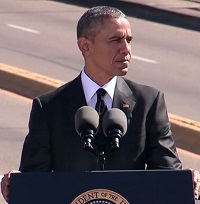About 10 days ago we had the anniversary of Flight MH370, when the Malaysian airliner disappeared from the skies.
There are broadly three categories of theories about the disappearance.
Firstly, something happened technically to the plane, perhaps a fire that rendered the crew unconscious.
Second, the pilot took deliberate and planned action – effectively it was an act of suicide which tragically took a plane load of passengers with him.
Third, any number of conspiracy theories, from the Americans shot it down, to the Russians stole it.
The second seems the likeliest. At the very least, human agency is suggested.
An international team established by the Malaysian government has recently issued a short report supported by 585 pages of supplementary information, which is summarised here. Apparently it offers few fresh insights into the disappearance, and no definite explanation. Heinrich Grossbongardt, an independent aviation expert, told German broadcaster Deutsche Welle:
“As of today there are absolutely no indications of what may have happened on board. What we can say, is that there is no known technical failure mode, which would explain the aircraft’s deviation from its planned flight path. So far as it’s humanly possible to tell, we have to assume that it is the result of deliberate action.”
The report found no unusual behaviour by crew:
Investigators said they found no indications of unusual behaviour by the pilots or cabin crew before the plane took off. “There were no behavioural signs of social isolation, change in habits or interest, self-neglect, drug or alcohol abuse of the captain, first officer and the cabin crew,” said the report. The team looked at CCTV recordings of the captain and first officer and said “no significant behavioural changes” were observed. They added that the captain’s ability to handle stress at work and home was “good” and he had no known history of apathy, anxiety or irritability. “There were no significant changes in his lifestyle, interpersonal conflict or family stresses,” it added. Investigators found no unusual health issues or financial irregularities either.
The last voice transmission came from Captain Zaharie Ahmad Shah, which said “Goodnight Malaysian three-seven-zero” a minute or so before the aircraft’s transponder ceased transmitting.
The report found that the battery for the underwater locator beacon attached to the flight-data recorder expired in December 2012, more than a year before the plane’s disappearance. The report said there was a “definite possibility” that the battery could still operate past its expiry date, but said “it is not guaranteed that it will work or that it would meet the 30-day minimum requirement”.
However, the battery on the locator beacon of the cockpit voice recorder was working.
Last Friday week ago, I think, search co-ordinator Angus Huston told the 7.30 Report that 43% of the designated search area had been searched, some 26,800 square kilometres of the ocean floor. Each day about 1% of the search is completed, so it will cover the entire area sometime in May. The Australian Transport Safety Bureau has a handy site on the MH370 search.
This map indicates the location of the search area:

Captain Simon Hardy, a senior Boeing 777 captain with a major commercial airline, spent six months analysing satellite data and came to the conclusion that the missing Malaysia Airlines plane was intentionally landed on the water and sank intact about 100 nautical miles away from where ATSB is currently conducting its search.
He says that the flight path suggests that the pilot was taking a long, last emotional look at Penang.
Aviation commenter Jeff Wise originally argued that MH370 didn’t crash in the Indian Ocean but rather was hijacked by the Russians and flown to a remote airfield in Kazakahstan. Now he is sitting on the fence, and has formulated three categories of theory similar to those I outlined above. He claims that there is evidence for all, but also gaping holes.
“It’s like a baby beauty contest where all the contestants are ugly. The question is, which baby is the least ugly?”
He does suggest, however, that what he calls the Suicide Pilot theory is presently the default theory.
The latest is that a supervising air traffic controller was asleep on the job on the night. The Malaysian authorities have promised a speedy inquiry.
Elsewhere Wikipedia has a comprehensive entry.




